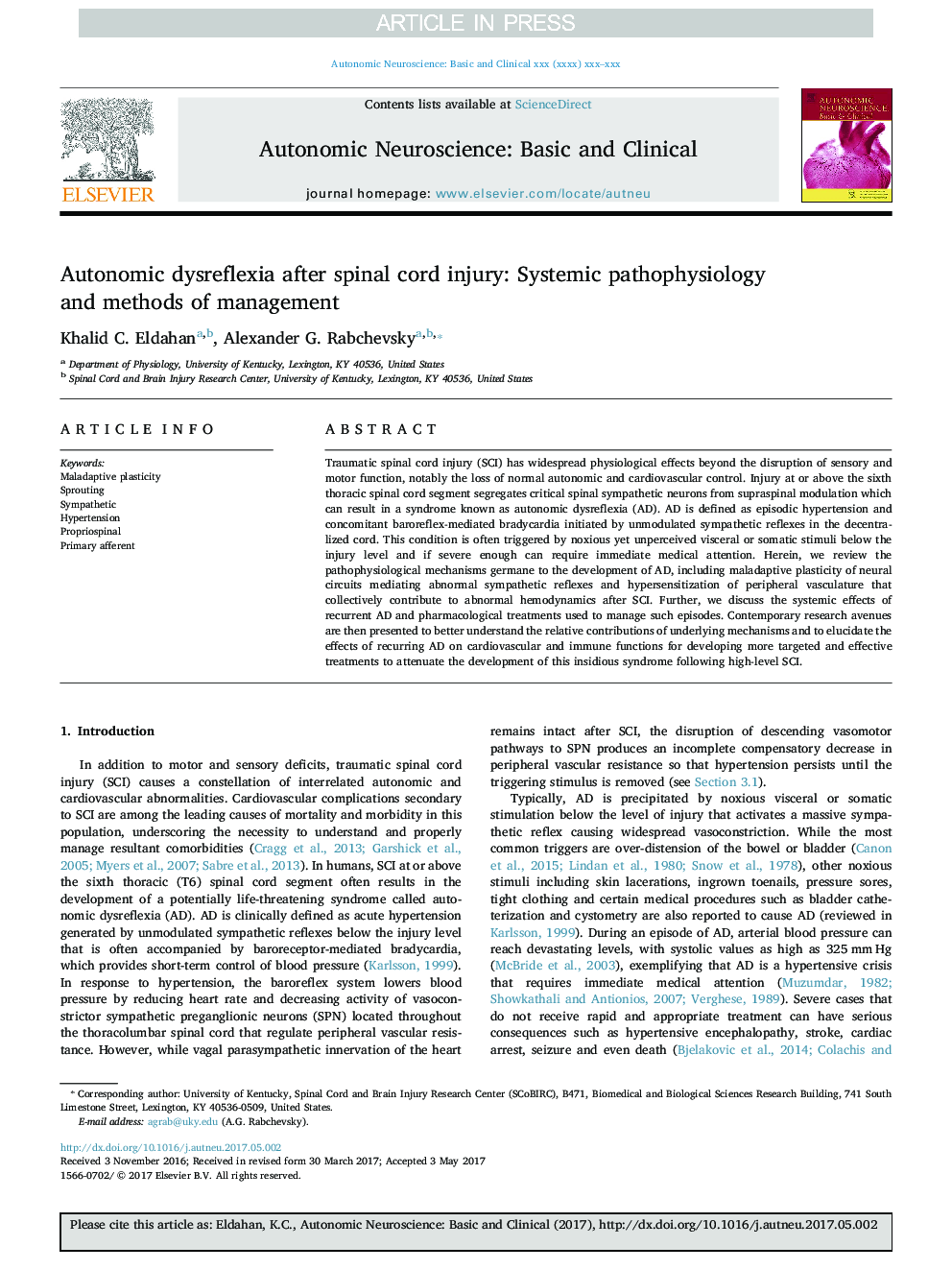| کد مقاله | کد نشریه | سال انتشار | مقاله انگلیسی | نسخه تمام متن |
|---|---|---|---|---|
| 8681064 | 1579506 | 2018 | 12 صفحه PDF | دانلود رایگان |
عنوان انگلیسی مقاله ISI
Autonomic dysreflexia after spinal cord injury: Systemic pathophysiology and methods of management
ترجمه فارسی عنوان
دیستروفیکسون خودمندی پس از آسیب نخاعی: پاتوفیزیولوژی سیستمیک و روشهای مدیریت
دانلود مقاله + سفارش ترجمه
دانلود مقاله ISI انگلیسی
رایگان برای ایرانیان
کلمات کلیدی
موضوعات مرتبط
علوم زیستی و بیوفناوری
علم عصب شناسی
علوم اعصاب سلولی و مولکولی
چکیده انگلیسی
Traumatic spinal cord injury (SCI) has widespread physiological effects beyond the disruption of sensory and motor function, notably the loss of normal autonomic and cardiovascular control. Injury at or above the sixth thoracic spinal cord segment segregates critical spinal sympathetic neurons from supraspinal modulation which can result in a syndrome known as autonomic dysreflexia (AD). AD is defined as episodic hypertension and concomitant baroreflex-mediated bradycardia initiated by unmodulated sympathetic reflexes in the decentralized cord. This condition is often triggered by noxious yet unperceived visceral or somatic stimuli below the injury level and if severe enough can require immediate medical attention. Herein, we review the pathophysiological mechanisms germane to the development of AD, including maladaptive plasticity of neural circuits mediating abnormal sympathetic reflexes and hypersensitization of peripheral vasculature that collectively contribute to abnormal hemodynamics after SCI. Further, we discuss the systemic effects of recurrent AD and pharmacological treatments used to manage such episodes. Contemporary research avenues are then presented to better understand the relative contributions of underlying mechanisms and to elucidate the effects of recurring AD on cardiovascular and immune functions for developing more targeted and effective treatments to attenuate the development of this insidious syndrome following high-level SCI.
ناشر
Database: Elsevier - ScienceDirect (ساینس دایرکت)
Journal: Autonomic Neuroscience - Volume 209, January 2018, Pages 59-70
Journal: Autonomic Neuroscience - Volume 209, January 2018, Pages 59-70
نویسندگان
Khalid C. Eldahan, Alexander G. Rabchevsky,
